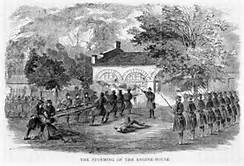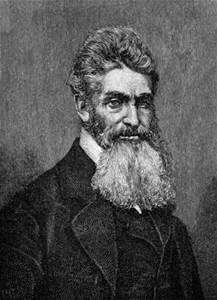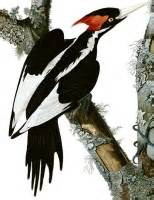 James McBride’s GLB is a wild ride, part historical novel, part fantasy, legend, cultural core sample, narrative experiment, part stylistic stunt. In short, it is not a realistic account or a psychological revelation. Though it employs facts, often as backdrop, sometimes as touchstones, often as shadows, securing from it a balanced historical truth would be harder than getting milk from an owl. Such evasiveness and jazzing about is maybe what I want a large portion of the novels I read to achieve.
James McBride’s GLB is a wild ride, part historical novel, part fantasy, legend, cultural core sample, narrative experiment, part stylistic stunt. In short, it is not a realistic account or a psychological revelation. Though it employs facts, often as backdrop, sometimes as touchstones, often as shadows, securing from it a balanced historical truth would be harder than getting milk from an owl. Such evasiveness and jazzing about is maybe what I want a large portion of the novels I read to achieve.
Here’s McBride’s method of attack. The prologue is a supposed newspaper article from 1966 claiming that a fireproof box rescued from the ruins of a burned Negro church in Delaware contains some Confederate money, “ a rare feather from an ivory-billed woodpecker” and notebooks of a congregant who recorded the life of former slave and orphan Mr. Henry Shackleford, who lived to be over a hundred. Shackleford, as a child and under the nom de guerre “the Onion” and the guise of a female, rode and fought with John Brown in his rowdy days, observed him, admired him, feared him but sometimes faced up to him.
The narrator is Henry/Onion from Kansas, and his/her struggles with identity, loyalty, belief and the slings and errors of outrageous fortune drive the narrative of antebellum bellicosity, religion, politics and night riding.
I don’t know if this somewhat picaresque premise is preposterous or postposterous, but it allows for some antic battle scenes, understated violence (and excessive violence), inventively obscene language and nightmare adventures. At times McBride seems to be channeling Cormac McCarthy or Pinckney Benedict, which may be rich but risky.
 The language and dark humor are at the heart of this story, the blood frolic and moral combustion. Some of the brightest moments occur when the Onion cuts through the tangle of verbiage and employs understatement, and when the book falters, the plot stalls and wheels spin, it’s usually because we’re in the midst of intentional overwriting meant to convey the un-savvy mind of a former slave about twelve or fourteen years old trying to negotiate through questions of sexuality, freedom, righteousness. The thematic waters are deep, but the characters don’t match up to them. A comic bent doesn’t always undermine the serious wind, but here it happens more often than I wanted.
The language and dark humor are at the heart of this story, the blood frolic and moral combustion. Some of the brightest moments occur when the Onion cuts through the tangle of verbiage and employs understatement, and when the book falters, the plot stalls and wheels spin, it’s usually because we’re in the midst of intentional overwriting meant to convey the un-savvy mind of a former slave about twelve or fourteen years old trying to negotiate through questions of sexuality, freedom, righteousness. The thematic waters are deep, but the characters don’t match up to them. A comic bent doesn’t always undermine the serious wind, but here it happens more often than I wanted.
Maybe I’m trying too hard here not to be a spoiler. We know what Brown’s history in the border wars of Kansas was, the hostilities at Pottawatomie and the depredations at Osawatomie, and the Onion is along as a kind of aide-de-camp and sounding board, as well as a pet who has strong feelings about many of the Brown clan and a range of diction that outstrips her/his range of action. The big figures of history (Frederick Douglass, for one, portrayed as an equivocator, drunk and potential molester) enter and leave obliquely, and Brown is portrayed sometimes as a monster, sometimes as a card-carrying idiot and on other occasions as an terrifying and inspiring leader like the one in John Steuart Curry’s famous painting of a cruciform prophet with outstretched arms, Bible and rifle in hand, tornadoes and flames behind, Negroes, Yanks and Rebs all around. On occasion, however, Brown seems genuinely reflective and tender, even funny. His recitations from imagined books of the Bible are slyly ridiculous, and McBride seems engaged in a disclosure of how zealotry can go berserk and burlesque. It doesn’t hurt that the naïve yet cunning Onion is a sympathetic, resourceful, sometimes hilarious guide. If only he had more Huck-gumption, but then that may be unfair, as the book I seem to be preferring has already been written and can be read again, if I need to.
Just when I would feel this Gordian knot of the oracular and vernacular less satisfying than frustrating, the author provides a bridge to the history of fiction about slavery, channels Twain a bit (though not as intent of issues of moral gravity and character complexity). He knows his history, and ingesting it is sometimes nourishing enough to forgive GLB its inconsistencies of period vernacular (like “a legend in your own mind” in the 1840s?), its easy jokes (like “Judge Fuggett”), anachronisms (like the 1950’s monkey wrench) or its absurdities, such as the capture of “sorghum syrup from sugar maple trees,” which is not presented as the confused boy/girl’s memory but that of the older man narrating his memoir.
 But then you get the Onion saying Brown was “smooth business in the woods, quiet as a deer,” and it sounds pitch-perfect. So here’s a large slice of the problem. We’re expected to sift through the language of the notebooks and sort out Higgins from the Onion from the mature and reflective Shackleford to the declining Shackleford in his ancient of days manifestation, all in the service of weighing credibility and verisimilitude. It like to give me the fantods.
But then you get the Onion saying Brown was “smooth business in the woods, quiet as a deer,” and it sounds pitch-perfect. So here’s a large slice of the problem. We’re expected to sift through the language of the notebooks and sort out Higgins from the Onion from the mature and reflective Shackleford to the declining Shackleford in his ancient of days manifestation, all in the service of weighing credibility and verisimilitude. It like to give me the fantods.
Lampoon, folktale, metaphoric history, cartoon? This is not a book very much about slavery but about a sometimes-addled adolescent crossdresser’s understanding of an enigmatic giant of American history. Complete with extended digressions and catalogues, several epic gestures. Perhaps it’s time to say that the phantasmagoria and grand guignol of the volume reflect that volatile period of American history more conventional historians usually shy away from.
Here’s a note of clarity and sanity. As the book reaches its third and final section (about half the 400-odd pages) it gallops toward more familiar ground for me – the Kennedy House, Harper’s Ferry, the unrealistic strategies and expectations, the intricate unfolding of events – it fairly races, working hard to infuse (stuff, really) the story with the actual names and times, weather, geography of the town and so on. At first I was relieved to be in this less swampy linguistic ground, to see cause-and-effect running on all four wheels, but after a hundred pages of that, I yearned a bit for the Keystone Cops abolitionists and Jethro Bodine slavers. I missed the kink and romp of the earlier episodes and the invitation to speculate how the Onion will keep identity secret here or turn a Brown to reason or hornswoggle one of the Madam he serves in a frontier brothel. SO I am of two minds (or half a one) on this book. It offers pleasures and irritations, but it is seldom dull reading or sleepy writing, and I wish I saw its ilk more often. . . if you can get ilk from an owl.
Maybe it’s best to say of Henry Shackleford (got that name, right?), “He had a dream and it shot him.” Or to accept the judgement of the Mad Hatter: “We are all mad here.”
But no need, as McBride’s dedication of the book reads: “For Ma and Jade,/ who loved a good whopper.” At least, he’s not trying to pull the sheep over our eyes.
However, since I dealt this hand, I should say something more about the bird, it’s disappearance from nature but occasional flights through the story. Almost none of this tale unfolds even close to the nineteenth century habitat of the Campephilus principalis, often called the Lord God Bird, Grail Bird or the Good Lord Bird. But a dead one appears long enough to be, off-stage, disassembled, its feathers distributed as talismans and credentials among the freedom fighters who are also terrorists. Maybe there’s a systematic metaphorical intent here, but I can’t untangle it. The bird is still extant in the middle of the nineteenth century but now extinct (so they say) due to loss of habitat and collectors. I can’t quite see that parallel as appropriate to develop either Brown or Shackleford, though I will keep looking.


